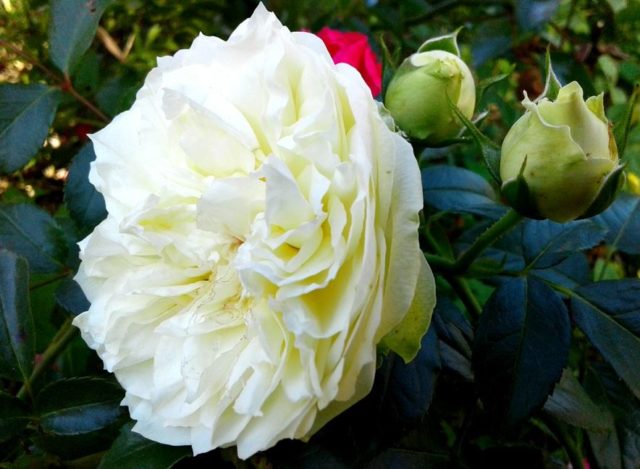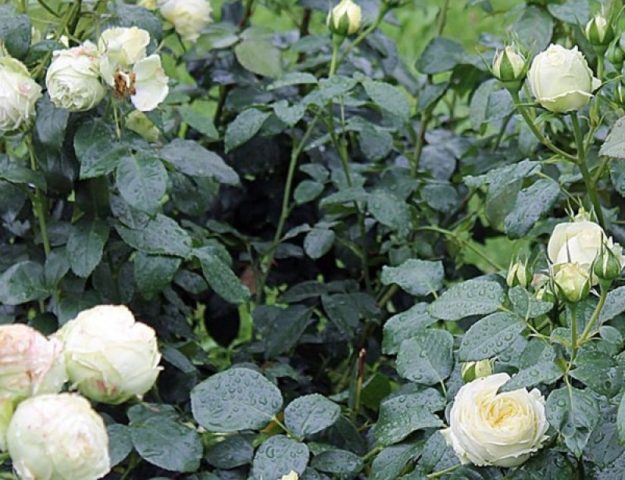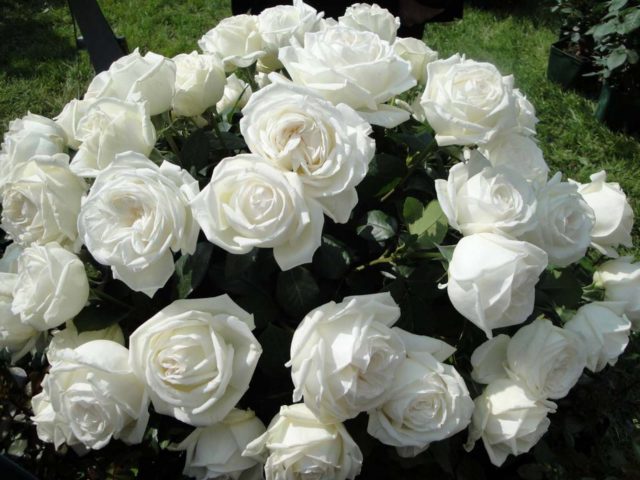Content
Rose Wedding Piano is an ornamental plant used to decorate suburban areas and green areas. The variety has gained significant popularity among gardeners, due to its resistance to diseases and adverse weather conditions. The presented variety is unpretentious, so it is not difficult to care for it. The cultivation technology involves a set of mandatory measures.
Breeding history
The Wedding Piano rose variety was bred by the famous German breeding company Rosen Tantau. It is included in the Piano series, but has a unique flower color. The variety appeared in 2014 and from that moment it is one of the most demanded in the European market.
Tea and large-flowered roses are used in breeding works. Wedding Piano is believed to be a cross between Avalanche Peach and Boeing. Hybridization of such species made it possible to obtain a plant showing high resistance to infections and harmful factors, being in the open field.
Rose Wedding Piano description and characteristics
It is a hybrid tea shrub with a height of 80 cm to 120 cm. Wedding Piano roses are spreading. Stems are strong, erect, dark green with a reddish tint. They are quite resilient, so they do not break during flowering.
The stems are covered with a few small thorns. The foliage is abundant, large. The length of the plate reaches 8 cm. The edges of the plates have notches characteristic of most varieties of roses. The color is dark green.
The Wedding Piano rose blooms in June. The period of active budding occurs in May.

The plant blooms twice a season for 4-5 weeks
The buds on Wedding Piano roses take a very long time to open. This does not adversely affect the decorative effect of the bushes. At an early stage of flowering, the buds are spherical. As they unfold, they become bowl-shaped, hemispherical.
Flowers with a diameter of 6-8 cm, densely double, consist of a large number of densely spaced petals. 3-5 buds appear on the shoots. Single flowers on stems rarely grow.
The color of the buds is cream. Closer to the core, the petals acquire a slight yellow tint. The buds exude a pleasant aroma of medium intensity. In the southern regions, the flowering of the bush continues until the onset of a persistent cold snap. Most often it lasts until the end of September.
The Wedding Piano variety is resistant to adverse weather conditions. Stems and flowers are not damaged by strong winds or rain.
The plant is well adapted to low temperatures. The Wedding Piano variety is assigned to the 6th frost resistance group. The bush tolerates frosts down to -29 degrees without prejudice to subsequent flowering. Despite this, in winter, roses need shelter to prevent the roots from freezing.
Like other representatives of the Piano varietal group, the plant is characterized by resistance to powdery mildew. It is also practically insensitive to black spot, fusarium wilting and other diseases.
The variety is unpretentious in care and does not require constant attention.It is enough to provide a nutritious soil, a suitable level of lighting and humidity.
Advantages and disadvantages of the variety
There are many factors to consider when choosing the right variety of roses. The Wedding Piano variety has many advantages, therefore it will satisfy the needs of even the most demanding gardeners.
Among the main advantages of the plant:
- unique decorative qualities;
- ease of growing;
- resistance to frost, prolonged precipitation;
- low sensitivity to infections;
- prolonged double flowering;
- pleasant aroma.

The first buds on Wedding Piano roses appear the next year after planting in the ground
The disadvantages of the variety are few. The main disadvantage is that to maintain the shape of the bush, regular pruning and tie-up of shoots is required. For the second flowering to be no less abundant than the first, additional feeding is necessary. The scent of the flowers can attract harmful insects.
Reproduction methods
To obtain new specimens, vegetative methods are used. The main one is root division.
Stages of the procedure:
- A healthy adult bush (3-4 years old) is pruned, leaving shoots 8-10 cm.
- The plant is dug in and removed from the soil.
- The roots are cleared of soil.
- Division is performed with a sharp instrument.
- The mother bush is returned to its original place.
- Delenki are planted in a previously prepared area or in a container.
Also, Wedding Piano hybrid tea roses can be propagated by cuttings and layering. These methods are considered effective, but time-consuming. The resulting planting material can be transferred to open ground only for the next season.
Growing and care
Wedding Piano roses require loose, well-fertilized soil, enriched with peat and compost. Organic matter is applied in early spring before planting. At the same time, the site is dug up. The place must be protected from strong winds.
It is advisable to plant a seedling in the fall. Then the plant will expend energy on rooting before the onset of cold weather. When planted in spring, underground shoots grow more slowly. Seedlings use more nutrients from the soil to grow stems and form foliage.
The plant needs abundant watering. It is carried out 1-2 times a week as the soil is compacted. The intensity of precipitation is taken into account. 1 adult bush requires 15-20 liters of water. Do not water with cold liquid, as this damages the roots.

Top dressing of Wedding Piano roses is carried out 5-6 times per season
Organic fertilizers are applied in early spring and autumn, in preparation for winter. During the period of active growth in April-May, nitrogen fertilization is required. During the formation of buds and during flowering, the bushes are fed with potassium and phosphorus.
The soil around the Wedding Piano roses is regularly loosened and mulched. To preserve moisture in the soil, bark, peat or dry compost are introduced in summer.
Sanitary pruning is carried out in spring and autumn. Remove lignified and dry shoots, withered foliage. In the summer, faded buds are cut so that they do not interfere with the appearance of new ones.
After flowering, the bush is prepared for winter. It is abundantly watered and fed with fertilizers, loosening is carried out. The soil surface is mulched with a layer of bark, straw or sawdust. If necessary, shoots are covered with non-woven breathable material.
Pests and diseases
Wedding Piano is resistant to powdery mildew and black spot. With prolonged drought or due to high humidity, the rose can get sick with rust or fusarium. For preventive purposes, the bushes are treated twice a year with copper sulfate, Bordeaux mixture or a complex fungicide for flowering plants.
Common pests:
- aphid;
- thrips;
- spider mite;
- bronze beetles;
- slobbering pennies;
- rose cicadas;
- leaf rollers.

Deterioration in the appearance of the bush is the main sign of pest damage
Numerous photos and reviews of Wedding Piano roses indicate that the bushes are rarely attacked by insects. For the fight, it is advisable to use insecticidal agents. The use of folk methods is permissible. The most effective are infusions of garlic, calendula, wormwood, which are used for spraying bushes.
Application in landscape design
Wedding Piano roses are recommended to be placed in single plantings. It is also allowed to grow bushes of this variety in groups. The distance between the roses is at least 40 cm.
Wedding Piano looks good in combination with other plants. Landscape designers recommend growing these roses alongside white and blue flowers.
You can plant a rose next to these crops:
- phlox;
- geycher;
- geranium;
- dahlias;
- astilbe;
- morning glory;
- dahlias;
- delphiniums;
- hydrangeas.
When planting in groups, you need to choose plants whose requirements for growing conditions and care will be identical. Undemanding crops should be placed nearby, which will not interfere with the growth of bushes.
Conclusion
Rose Wedding Piano is a plant with beautiful creamy buds. It blooms twice a season and retains its decorative effect until the onset of cold weather. The variety shows high resistance to adverse factors, including frost, infections, excess precipitation. Competent care allows you to eliminate the threat to the plant and protect it from premature wilting.











